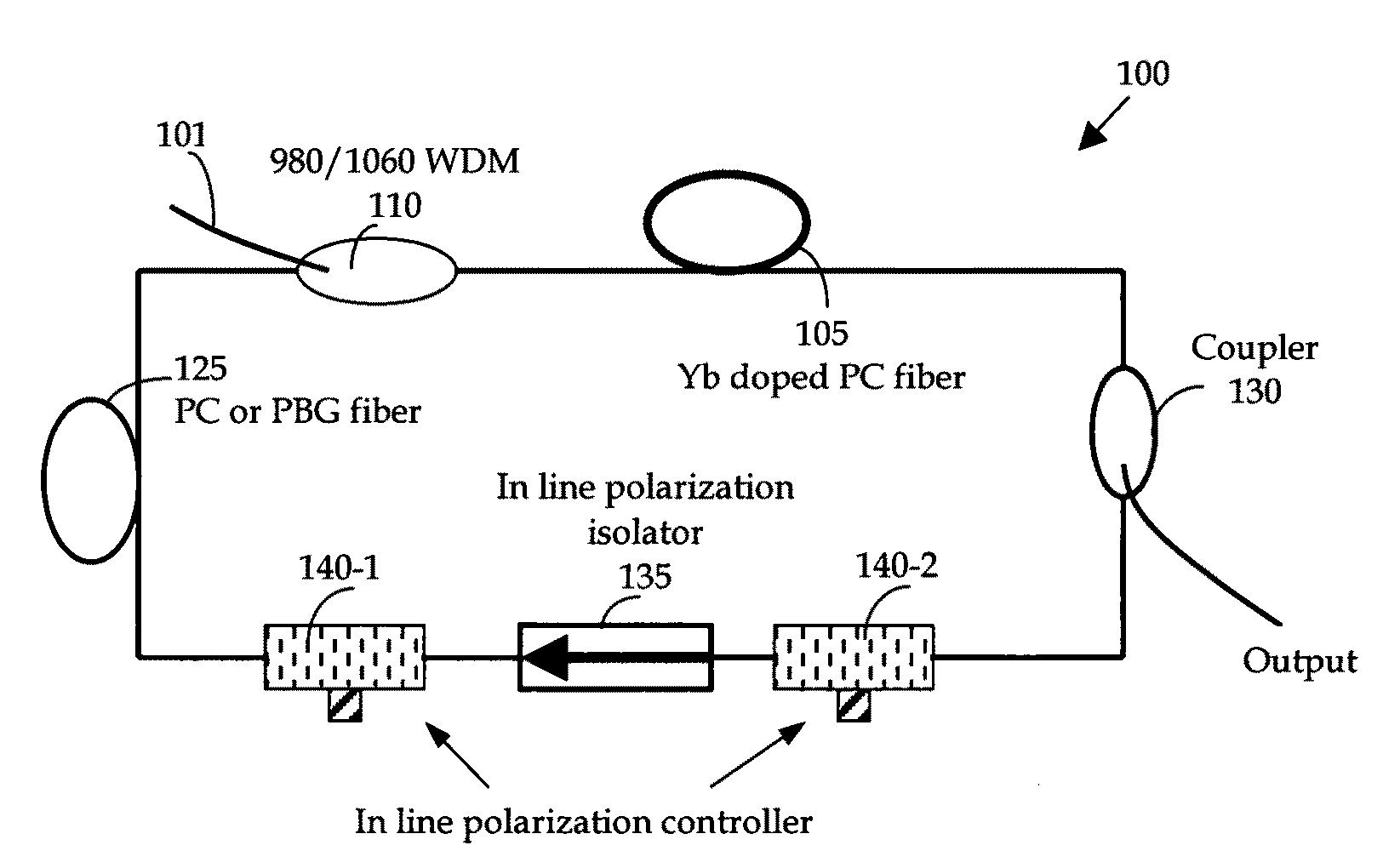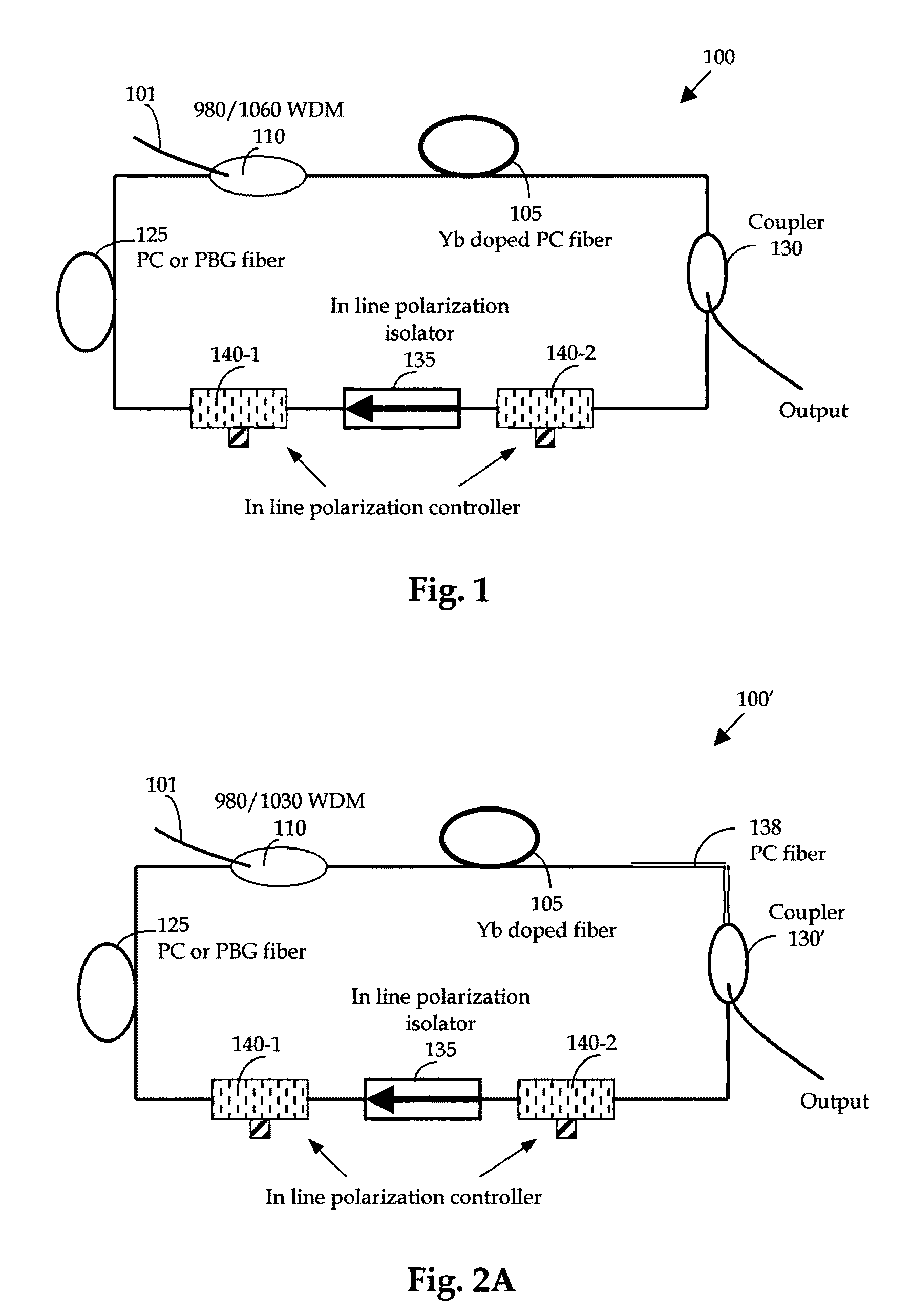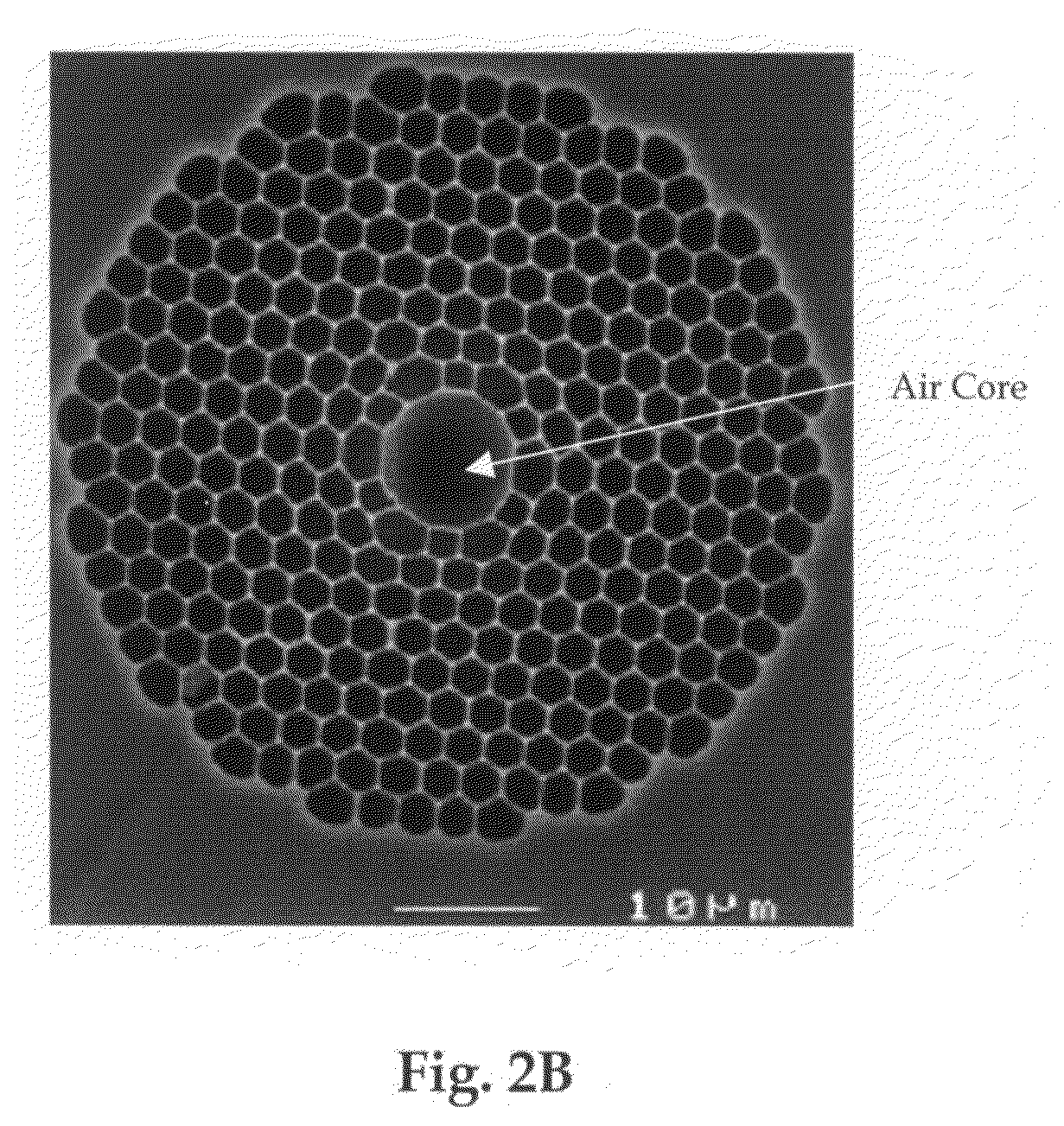Nonlinear polarization pulse shaping model locked fiber laser at one micron with photonic crystal (PC), photonic bandgap (PBG), or higher order mode (HOM) fiber
a fiber laser and polarization technology, applied in the direction of electrical equipment, basic electric elements, laser details, etc., can solve the problems of affecting the distortion of pulse shapes, and the inability to achieve the practical application of ultra-short pulse and high power lasers
- Summary
- Abstract
- Description
- Claims
- Application Information
AI Technical Summary
Benefits of technology
Problems solved by technology
Method used
Image
Examples
Embodiment Construction
[0024]FIG. 1 is a schematic diagram of an ultra compact and low cost all-fiber based high power femtosecond fiber laser system of this invention. This is a laser system formed with all fiber-based components. The fiber laser has a ring configuration receiving a laser input through wavelength de-multiplexing (WDM) device 110 of a source laser that may have ranges of wavelengths, e.g., 980 or 1550 nm. The all fiber-based laser 100 is implemented with a Yb doped fiber 105 as a gain medium to amplify and compress / stretch the pulse. The Yb gain fiber can be either PC fiber or regular single mode Yb doped fiber. A telecom grade 980 nm pump laser is used to pump Yb ions for amplification of the intra cavity pulses. To compensate the dispersion and dispersion slope in the fiber laser cavity, instead of using grating pairs or prisms, another photonic crystal fiber or PBG fiber 125 is employed. Because PC or PBG fibers 125 can provide both normal and anomalous dispersion at 1060 nm range with...
PUM
 Login to View More
Login to View More Abstract
Description
Claims
Application Information
 Login to View More
Login to View More - R&D
- Intellectual Property
- Life Sciences
- Materials
- Tech Scout
- Unparalleled Data Quality
- Higher Quality Content
- 60% Fewer Hallucinations
Browse by: Latest US Patents, China's latest patents, Technical Efficacy Thesaurus, Application Domain, Technology Topic, Popular Technical Reports.
© 2025 PatSnap. All rights reserved.Legal|Privacy policy|Modern Slavery Act Transparency Statement|Sitemap|About US| Contact US: help@patsnap.com



